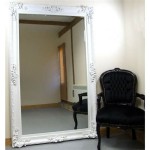How To Screen Mirror On Samsung TV With Mac
Screen mirroring allows users to display the content of their Mac's screen on a larger display, such as a Samsung TV. This functionality can be beneficial for presentations, entertainment, or simply enjoying a larger view of one's workspace. This article will outline various methods for achieving screen mirroring from a Mac to a Samsung TV.
1. Using AirPlay 2 (For Compatible Models)
The simplest method for screen mirroring a Mac to a Samsung TV is using AirPlay 2. This technology allows for wireless streaming directly from Apple devices to compatible smart TVs. To determine if your Samsung TV supports AirPlay 2, consult the TV's user manual or the manufacturer's website.
If your Samsung TV is AirPlay 2 compatible, ensure both the Mac and the TV are connected to the same Wi-Fi network. On the Mac, click the Control Center icon in the menu bar. Click the "Screen Mirroring" icon, and select your Samsung TV from the list of available devices. The TV screen will then mirror the Mac's display.
Users can adjust the resolution and other display settings within the Mac's display preferences. Disconnecting the mirrored display is as simple as selecting "Stop Mirroring" from the Screen Mirroring menu.
2. Utilizing AirPlay with Apple TV
For Samsung TVs that don't support AirPlay 2 natively, using an Apple TV provides a reliable alternative. The Apple TV connects to the Samsung TV via HDMI, creating an AirPlay receiver. This method offers a consistent and high-quality mirroring experience.
Connect the Apple TV to an HDMI port on the Samsung TV and ensure it's connected to the same Wi-Fi network as the Mac. On the Mac, click the Control Center icon in the menu bar and select the "Screen Mirroring" icon. Choose the Apple TV from the list of available devices. The Samsung TV, now receiving input from the Apple TV, will mirror the Mac's screen.
Similar to direct AirPlay mirroring, users can manage display settings through the Mac's display preferences. Disconnecting the mirrored display is also achieved by selecting "Stop Mirroring" in the Control Center.
3. Third-Party Mirroring Applications
Several third-party applications facilitate screen mirroring from a Mac to a Samsung TV. These applications often offer features beyond basic screen mirroring, such as streaming specific media files or enabling remote control functionality. Researching reputable mirroring applications and selecting one that best suits individual needs is recommended.
Specific instructions for using third-party mirroring software vary depending on the application chosen. Generally, these applications require installation on both the Mac and a corresponding receiver application on a device connected to the Samsung TV, or direct installation on a smart TV. Refer to the chosen application's documentation for detailed setup and usage instructions.
4. HDMI Cable Connection (Wired Method)
While wireless methods offer convenience, a direct HDMI connection provides the most stable and highest-resolution mirroring option. This method requires an HDMI cable and, in some cases, a USB-C to HDMI adapter for Macs lacking a dedicated HDMI port.
Connect one end of the HDMI cable to the Mac (using an adapter if necessary) and the other end to an available HDMI port on the Samsung TV. On the Samsung TV, select the corresponding HDMI input source. The TV will then mirror the Mac's display.
Display settings, including resolution, can be adjusted through the Mac's display preferences. Disconnecting the mirrored display simply involves unplugging the HDMI cable from either the Mac or the TV.
5. Chromecast (For Supported TVs)
For Samsung TVs that support Chromecast, users can leverage the Google Chrome browser on their Mac for screen mirroring. This method is particularly useful for mirroring specific browser tabs or the entire desktop.
Ensure both the Mac and the Chromecast-enabled Samsung TV are on the same Wi-Fi network. Open the Chrome browser on the Mac and click the three-dot menu icon in the top-right corner. Select "Cast..." and choose your Samsung TV from the list of available devices. Users can choose to cast a specific tab, their entire desktop, or a specific file.
Stopping the cast is achieved by selecting "Stop casting" from the Chrome browser's cast menu.
6. Troubleshooting Common Mirroring Issues
If encountering difficulties during the mirroring process, several troubleshooting steps can be taken. Verifying that both the Mac and the Samsung TV are connected to the same Wi-Fi network is crucial. Restarting both devices can often resolve connectivity issues.
Checking for software updates on both the Mac and the TV, as well as for any connected devices like the Apple TV or Chromecast, is also recommended. Consulting the respective device manuals or manufacturer's websites for specific troubleshooting guidance can provide further assistance.

How To Screen Mirror Mac Samsung Tv Step By Guide

Mirror For Samsung Tv 3 8 5 Macos Free Filecr

How To Screen Mirror Macbook Samsung Tv

14 Fixes For Screen Mirroring Mac To Samsung Tv Not Working Techwiser

Diffe Apps For Screen Mirroring Mac To Samsung Tv

How To Mirror A Mac Smart Tv

How To Screen Mirror Mac Samsung Tv Step By Guide

Mirror For Samsung Tv Offers Mac Screen Mirroring On Smart Tvs Mactrast

How To Mirror Macbook Samsung Smart Tv

Screen Mirror To Samsung Tv Android Mac Ios Free App








